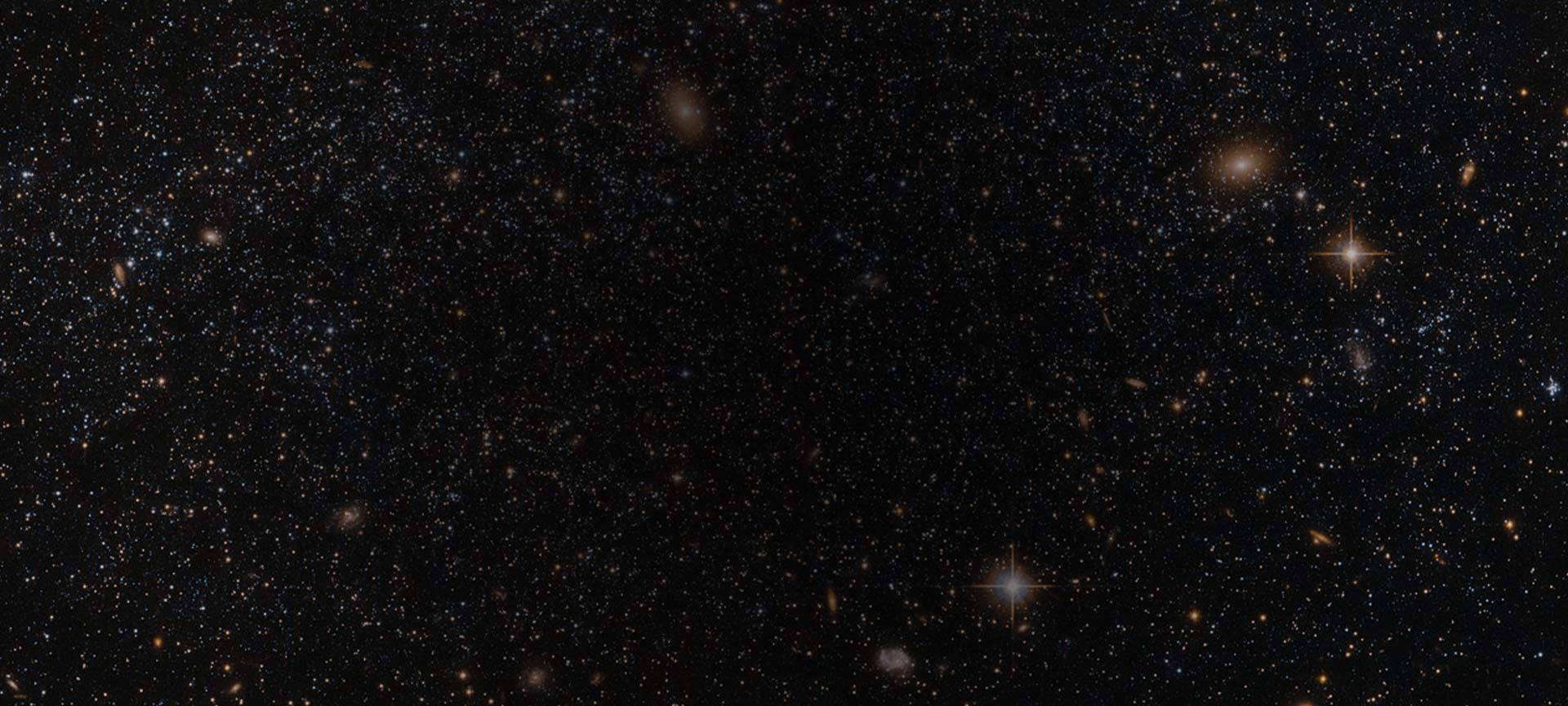
About DON
Overview
The Distributed Observer Network v3 (DON3) is a virtual environment where simulation results can be assessed simultaneously by multiple users at multiple locations. Developed by NASA and ITSS at the Kennedy Space Center, DON3 leverages commercial gaming technology to bring 3D models of simulated mission data to the desktop. The joint development team created DON to address some of the more common shortfalls related to simulation sharing. Along the way, creating:
– Common, standardized data formats for simulation information sharing
– Tools that run on commercially-available platforms and can distributed data across the internet
– An efficient distribution of simulation results across users, teams and time
Immersive 3D visualizations are created by integrating 3-D model data from CAD programs and NASA simulators with state and meta information from advanced simulation and analysis tools into a game based 3D environment. With the streaming interface, DON3 enables users to view accurate 3D representations of mission simulations in near-real-time. The SEE 2014 effort integrated mission data from a large distributed student simulation and streamed it to the SEE (Simulation Exploration Experience) event for display and analysis. The integrated DON3 recording function allows this simulation to be replayed and reanalyzed whenever necessary. The replay and distribution capabilities facilitate collaboration, reduce costs, increase access to information and preserve rich simulation information.
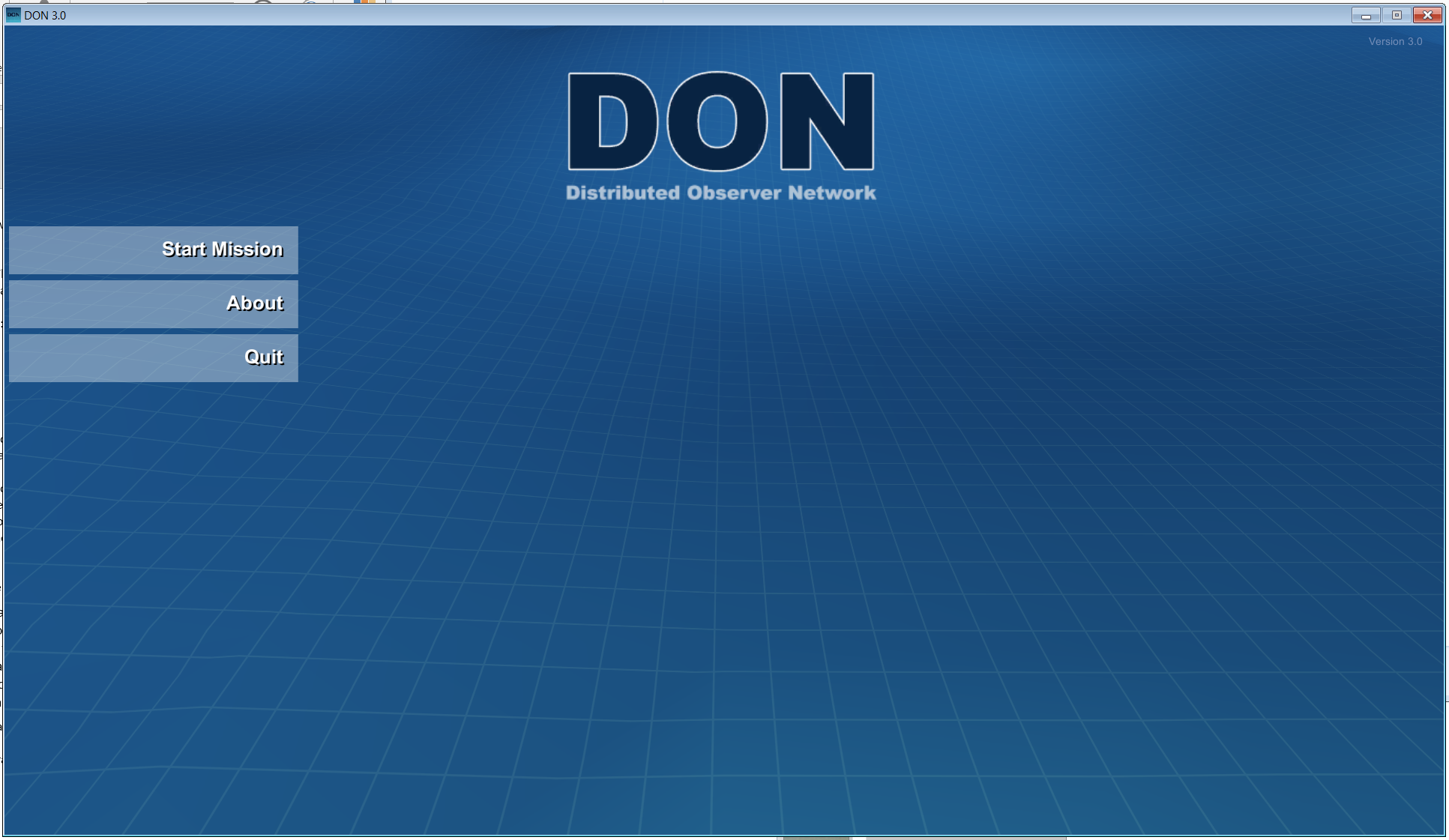
By presenting this real-world representation of simulation data in an immersive and interactive environment, DON3 encourages collaboration, reduces project costs, and improves effectiveness of simulation results assessment.

Remote Collaboration
Each simulation can be viewed by multiple users from desktop or laptop computers, locally or remotely via the Internet – enabling teams to share data and coordinate efficiently to add value.
Using commercial gaming technology, the DON displays 3D simulations on a user’s Mac or PC from anywhere in the world. The DON supports clients using both the MAC and Windows. Future versions will run on LINUX as well.

Interactive Capability
Unlike video based simulation captures, where the “big screen” video is recorded, DON3 provides video game like interactivity.
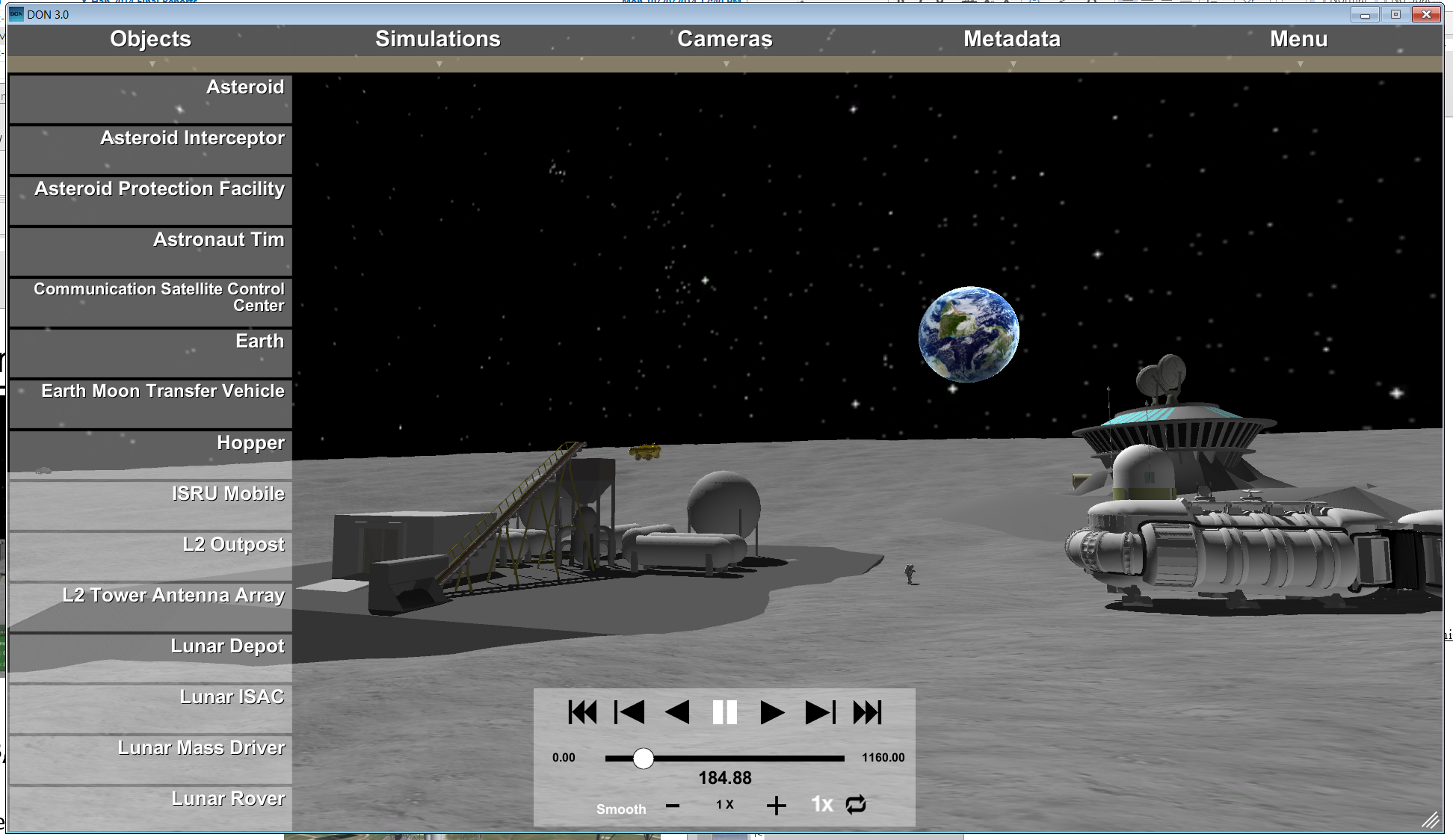
Dynamic Perspective
The DON fully immerses users within an analysis driven virtual environment based on simulation data, allowing the ability to view simulations operating in near-real-time.
Moving freely within the virtualized environment, users can examine scenarios from multiple viewpoints without the cost of recreating systems and data associated with the simulation. DON3 acquires all of its information from authenticated simulation sources.
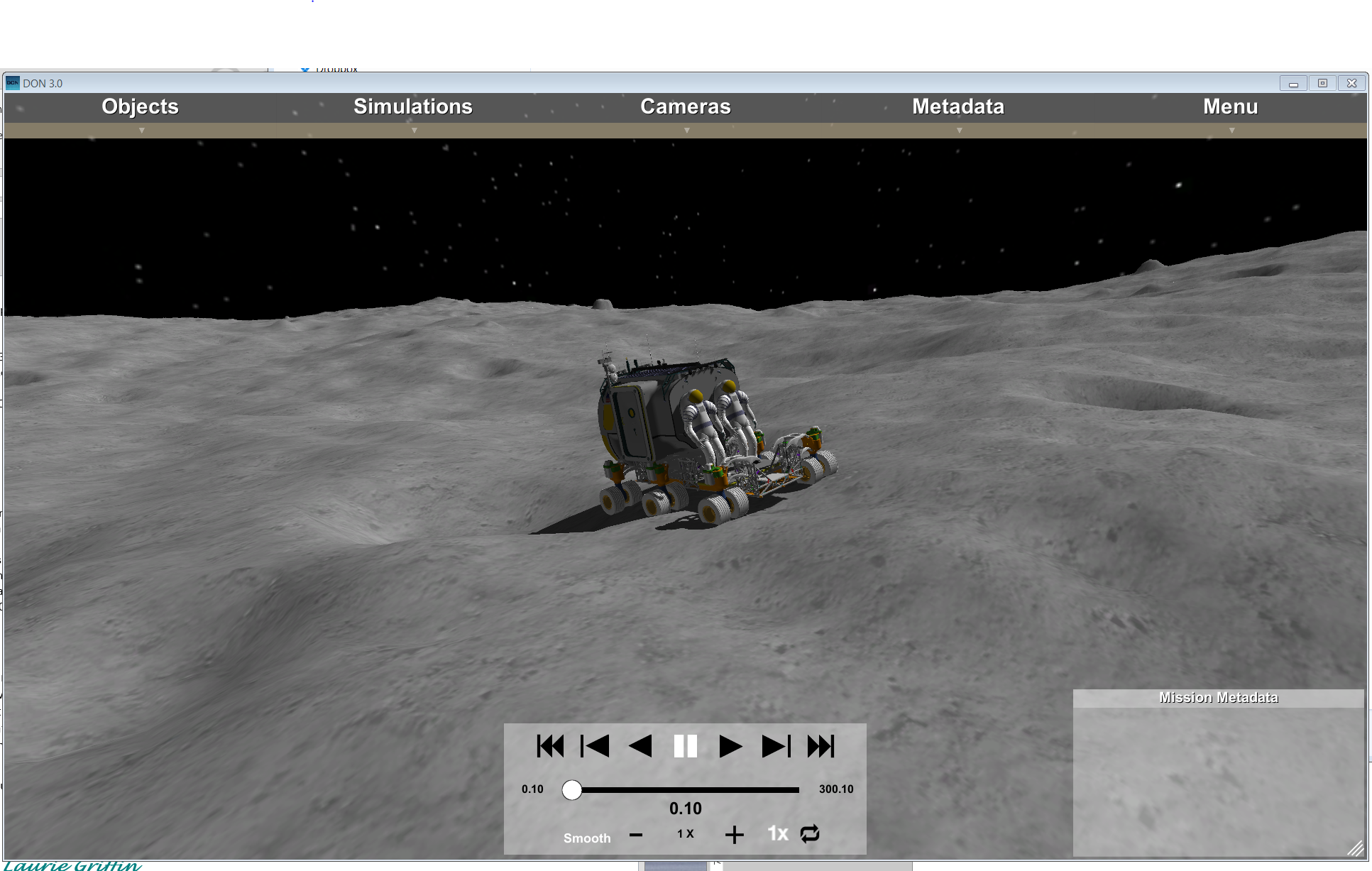
Enhanced Visualization
Complex simulations can be saved, allowing user analysis and group discussion at any time. Telemetry Controls enable full operation and playback control and can be limited to assigned users. Telemetry playback controls allow users to loop, fast-forward, and rewind simulation output while maintaining the ability to move freely.
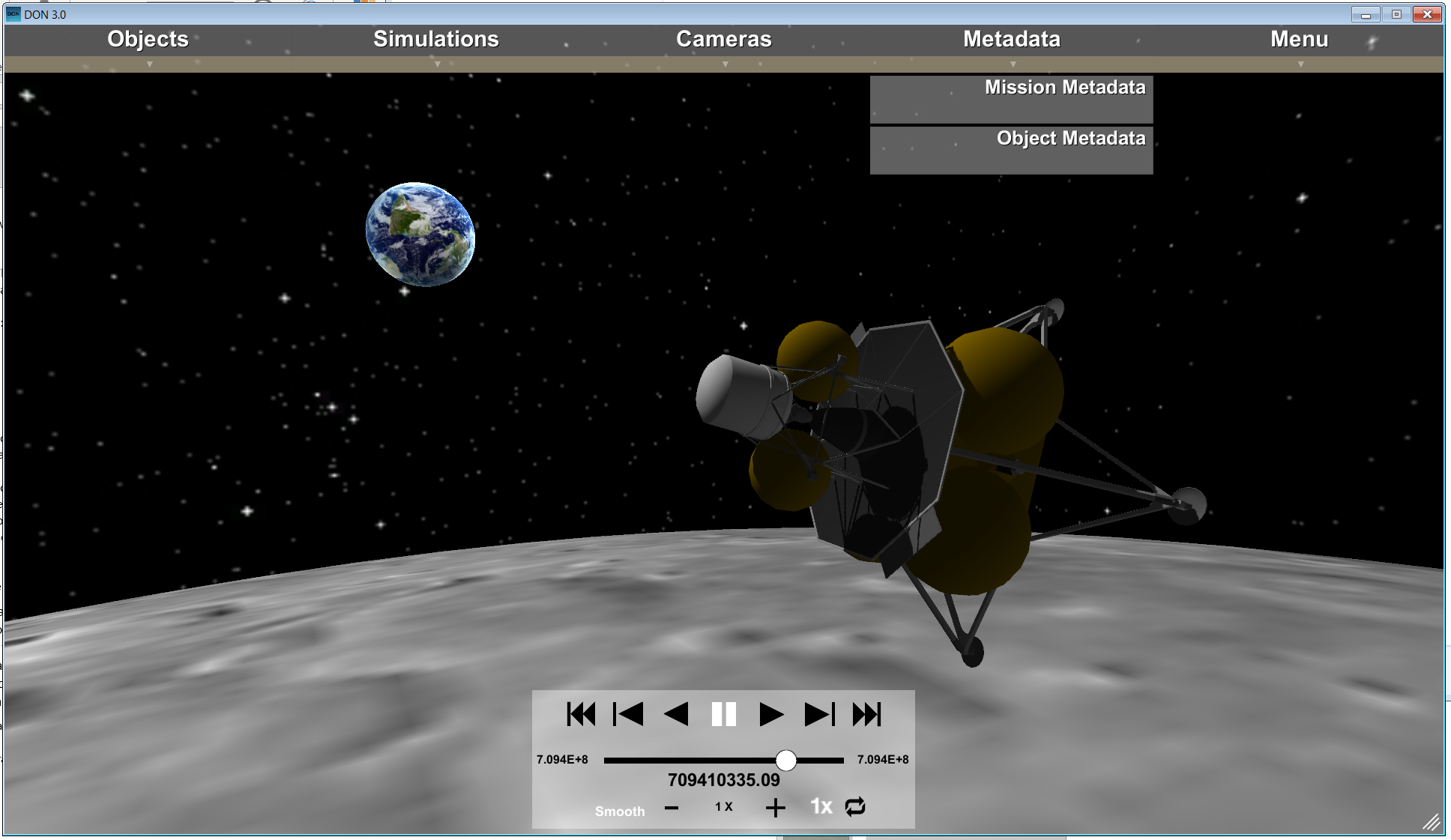
The DON In Action
Exploration requires bold, innovative thinking, a steadfast commitment to planning, and the very best technology. NASA has embraced this commitment for nearly half a century, pushing beyond the outer reaches of our understanding, and today is equipped with the tools to meet the challenges of a new millennium.
As the primary viewing and distribution environment for NASA’s Constellation Program, run by the Exploration Systems Mission Directorate (ESMD), the DON employs gaming technology to bring data from potentially hundreds of mission simulations to a desktop virtual environment. The DON enables cost-effective information-sharing by allowing engineers to rapidly communicate complex information in a common environment for user collaboration from anywhere in the world.

Exploring the Moon, Mars and beyond will require the brightest minds, and the best technology, and NASA’s Constellation Program is leading the way with the DON.